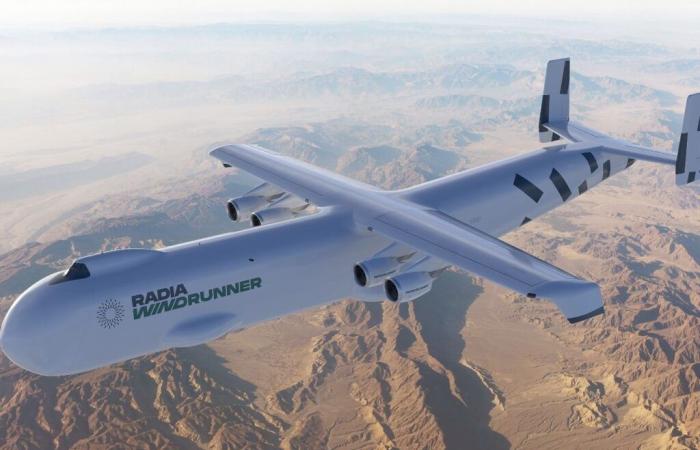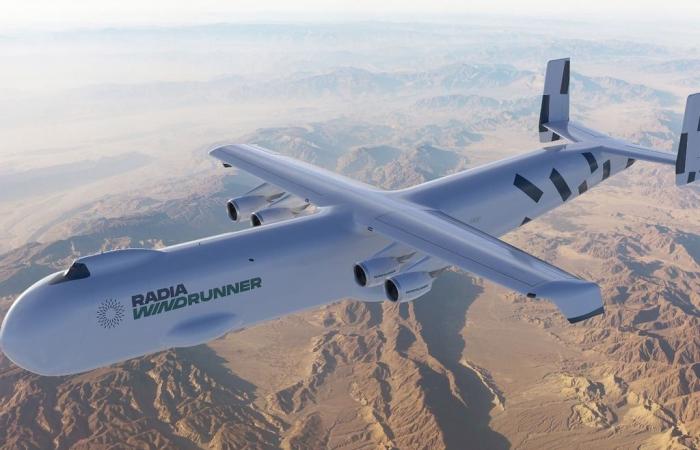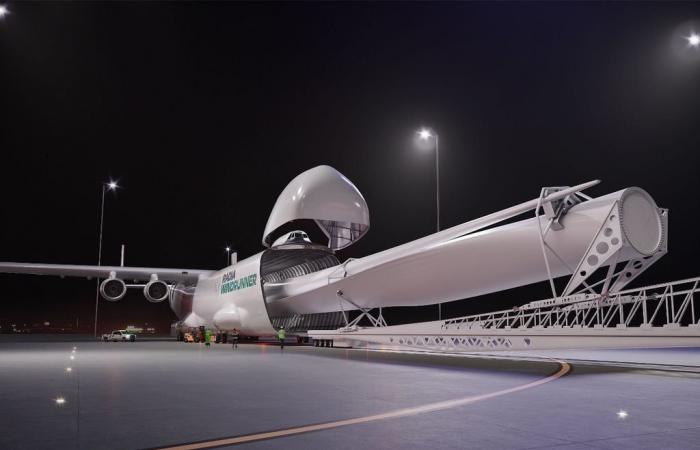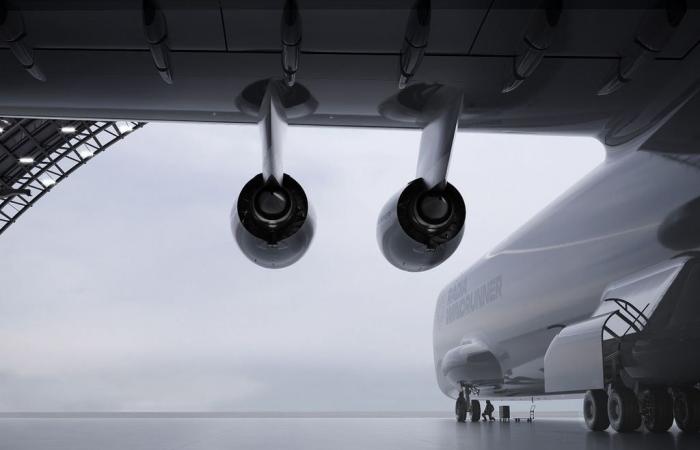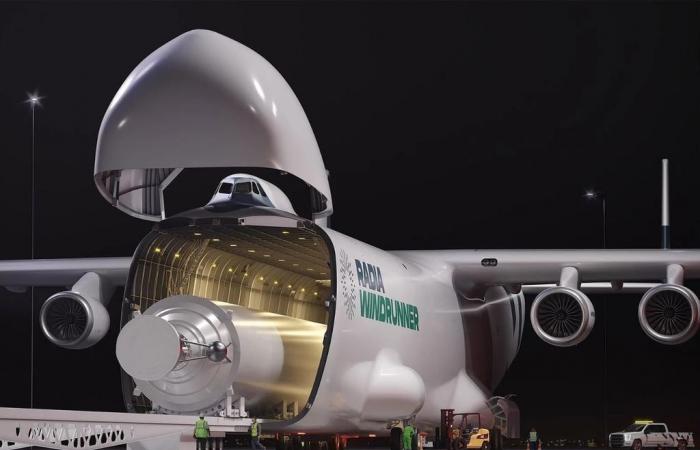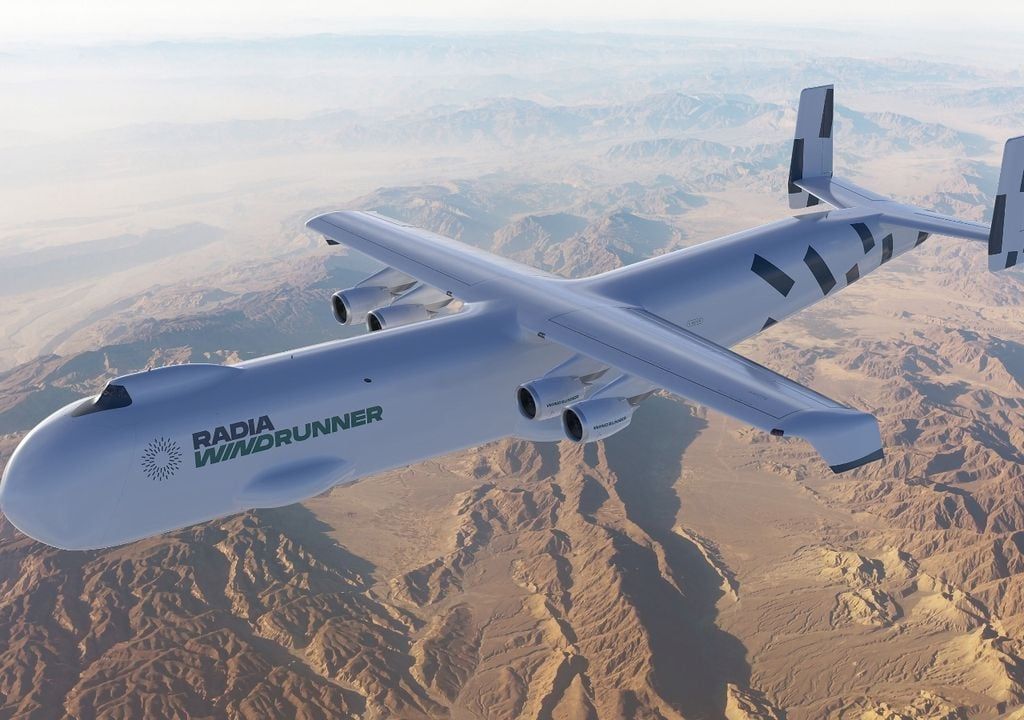
At a time when the climatic emergency requires creativity and infrastructure, an American company offers a monumental and disruptive solution: an airplane that will carry not passengers or goods, But the blades of wind turbines where it is very difficult to access by land.
It is Radia, a company that focuses on earthly wind energy solutions. She is led by aerospace engineer Mark Lundstrom and her team includes experts from Boeing, Embraer and Bloom Energy.
This colossal plane is called Windrunner and its characteristics are impressive: 108 meters long, 24 meters high, a load capacity of 72 tonnes and an internal volume 12 times higher than that of a Boeing 747. He can land on short and non -paved tracks, which will be essential to reach isolated sites where the wind farms are often found.
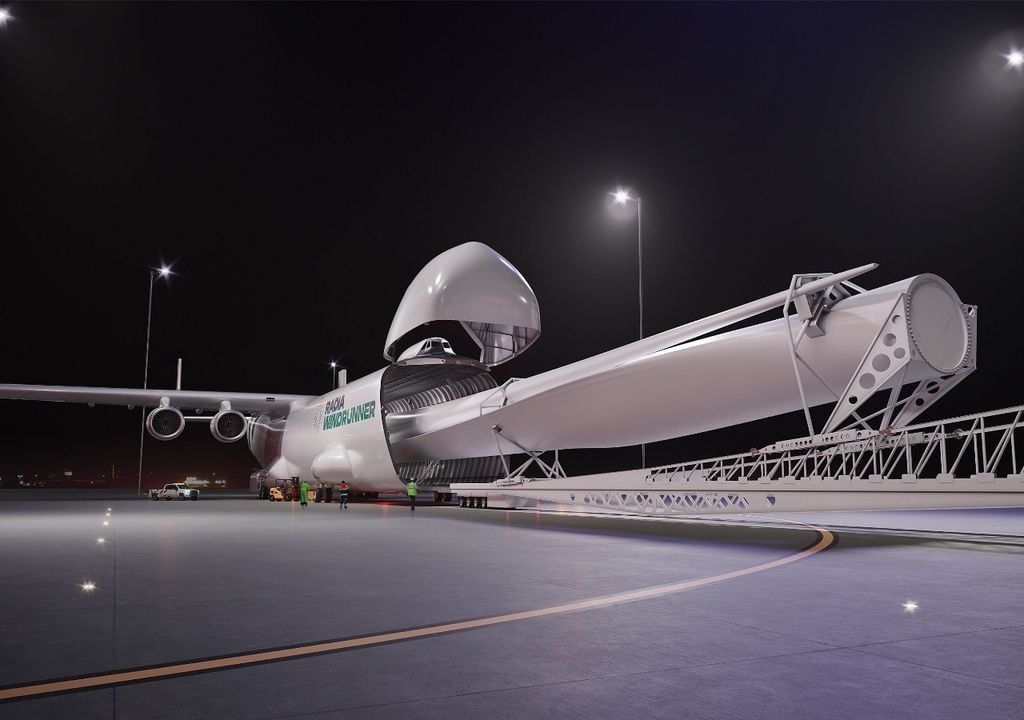
Wind energy is one of the most promising renewable sources, but its development on earth is limited by a logistical difficulty: The most effective – long, thin, thin, designed wind turbines to capture more wind even at low speed – cannot take ordinary roads. The tunnels, the bridges and the curves impose a ceiling of about 70 meters. Beyond that, they simply cannot adapt.
At sea, this limit does not exist. This is why offshore turbines have progressed more quickly and are larger, But they are more expensive and more complex to install. What if these turbines could also be installed on firm land?
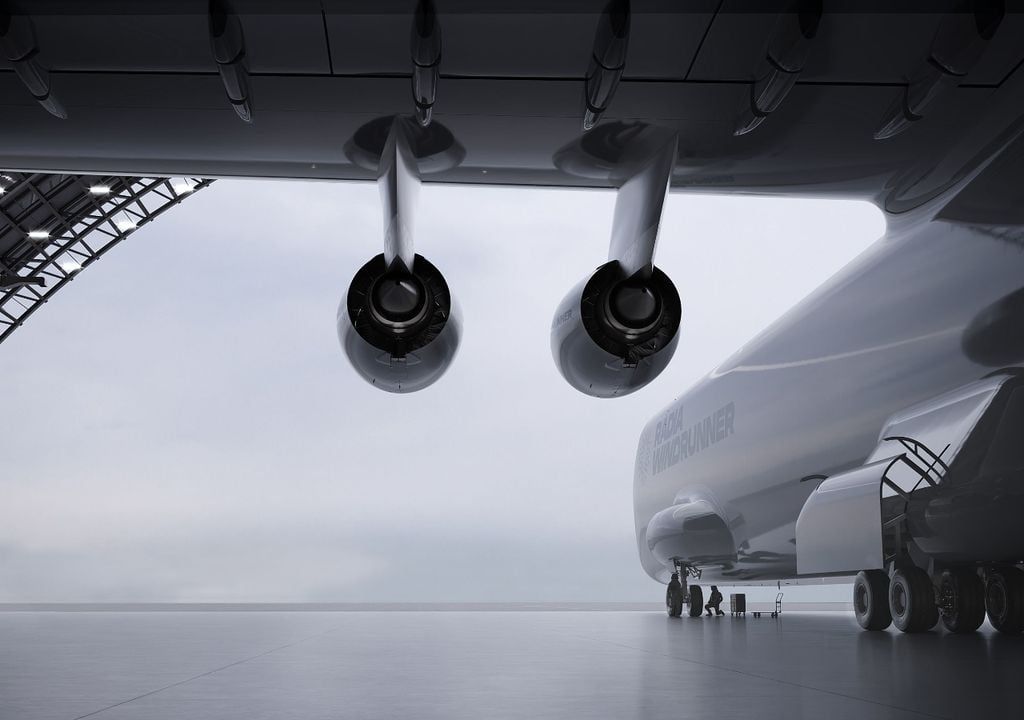
This is the question posed by Mark Lundstrom, founder of Radia. To begin with, Solutions such as heavy drones, airships and terrestrial modular systems have been envisaged. But all of them have been discarded due to their high cost, their technical limits or their large -scale operational feasibility.
This is how the company’s team of engineers imagined a gigantic plane, capable of transporting blades that can reach 105 meters directly on distant sites, where new generation turbines could be installed.
The Windrunner will have a wingspan of about 80 meters, Because it was designed with high wings and a robust landing gear for maneuvers at airports.
-Even if the blades of a turbine are more than 100 meters long, their transport to an airport is not a major problem, as these are generally shorter distances. On the other hand, When turbine parts should be moved to hundreds or thousands of kilometers, Complexity increases and bridges, tight turns and tunnels make it impossible to access the destination.
Gigawind: the other side of innovation
Radia is already working with partners such as Aernnova, Leonardo and Afuzion on the development of this plane, The first flight of which is scheduled before 2029.
The technology that Windrunner seeks to implement its own name: Gigawind. This is how Radia calls on her proposal for land wind turbines XXL, With longer blades, higher towers and greater energy efficiency.
According to a study cited by the company, an operational park of Windrunners would make it possible to install 216 gigawatts of additional capacity in the United States by 2050, which could cover up to 40 % of the country’s electricity demand. The same analysis provides for a reduction of 16 % of energy costs and a significant drop in emissions: up to 760 million tonnes of CO² less per year.
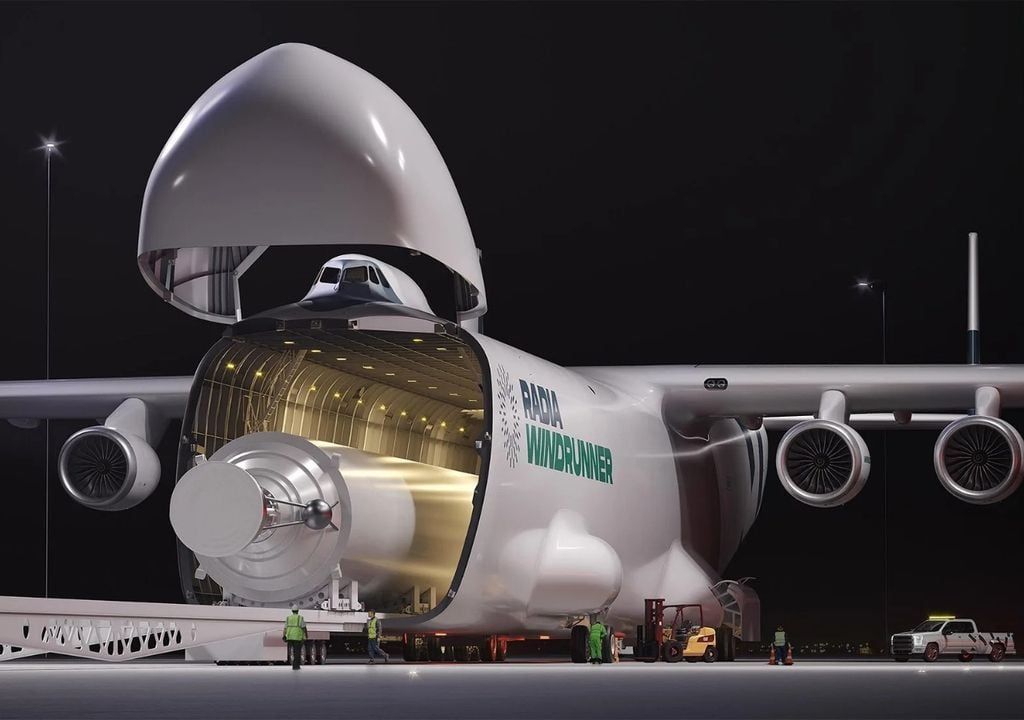
“The challenge is not technological, but logistical,” said Lundstrom during a recent interview. “We already know how to make these turbines. What was missing was a way to transport them. ”
Although it may seem counterattack to use planes to promote energy transition, Radia says that each Windrunner flight will largely compensate for its emissions. The logic is simple: By allowing the installation of larger turbines, we generate more renewable energy and replace more polluting fossil energy sources.
If he keeps his promises, The Windrunner will not only be the biggest plane in the world. He will also play a key role in the exploitation of the true terrestrial wind power potential.

